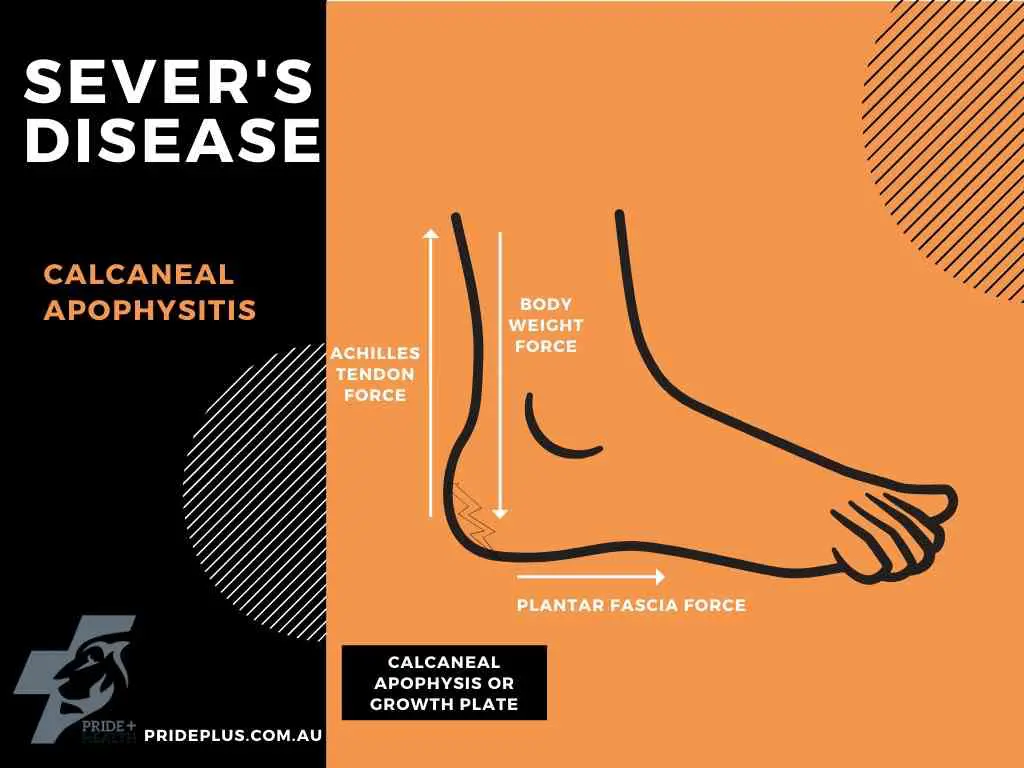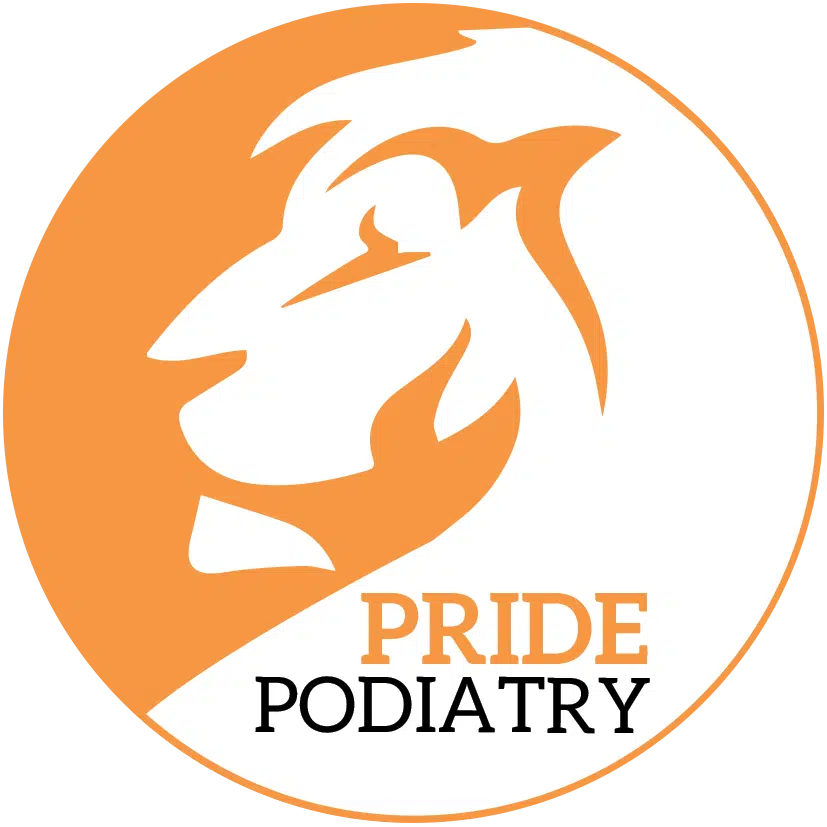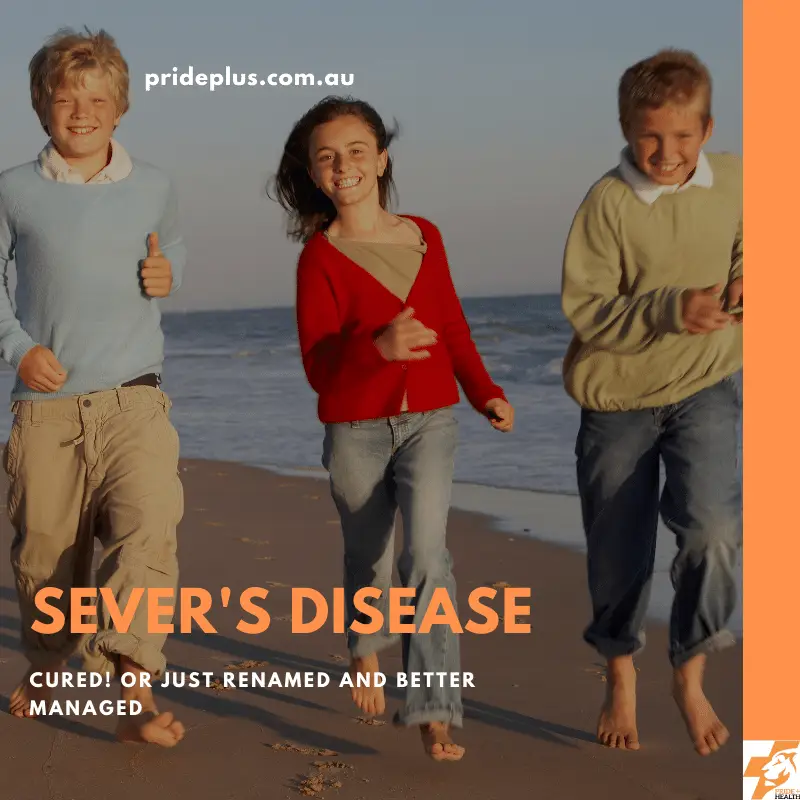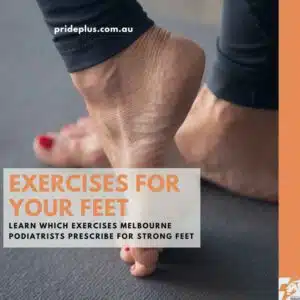What is Sever’s disease?
Firstly, it’s not a disease! Sever’s disease is the much more common, antiquated and dare we say it, outdated nomenclature for calcaneal apophysitis. An injury that affects many growing young kids every single day.
You see the heel bone called the calcaneus has a soft growth plate that runs through it near where our achilles attaches. This growth plate is where when we go through our growing childhood years we can get the very painful condition that used to be known as Sever’s disease. Now, calcaneal apophysitis.
The reason our growing feet are prone to getting pain in the heel is that It’s really a very unfortunate position for a soft-ish part of bone to be sitting. The calcaneal growth plate is right at the back of the heel with the big strong achilles tendon pulling on one side and bodyweight pushing down on the other side. There’s also the strong plantar fascia pulling at the front of the growth plate.

With these 3 big forces acting on the growth plate, one step too many can lead to a lot of pain. Usually your child will start to complain of an aching heel when they are more active. If loading is not addressed and the pain deteriorates it can become very sore on all steps, and linger at night as well.
Kids between the ages of 8 – 13 are the most likely to suffer from Sever’s disease or calcaneal apophysitis which can make some aspects of treatment difficult. Ideally we want to keep our young ones active for their health and development. Trouble is we know Sever’s disease is an overload on a tissue. This means that stopping activity completely is sadly a therapy that’s often suggested. Now this could be a reasonable option in some clinical situations however most cases of Sever’s disease can be treated with other load optimisation techniques. Let’s get into the details.
How to treat Sever’s disease?
Optimise that load! We have a few places we can start.
Option One: Reduce the peak pull (vertically) on the achilles side of the calcaneal growth plate.
- You can do this by elevating the heel with a shoe with a pitch or drop of 12mm or more.
- There’s also the option to use a firm heel wedge inside shoes to again lift the heel and reduce the peak pulling force on the growth plate.
Option Two: Reduce the peak pull horizontally on the plantar fascial side of the calcaneal growth plate
- This is getting a little nitty gritty into the biomechanics and anatomy of the foot but we can reduce the greatest pulling force on the underside of the calcaneal growth plate with stable footwear and orthotic inserts
Option Three: Reduce the peak twisting of the growth plate
- As we walk and run our heel bone needs to twist in and out as we adapt to different surfaces and move from a shock absorber to rigid lever for propulsion. During this our heel twists in and out with each step. We can reduce this just a touch each step by wearing more stable footwear and potentially the use of orthotic insoles. When considering orthotics, mostly a prefabricated orthotic can be used for growing kids with Sever’s disease although sometimes a custom foot orthotic is required.
Option Four: Reduce the total volume of pulling, pushing and twisting on the heel bone by changing training volume.
- Ideally this is done with careful consideration to what the little or not so little legend with a sore heel wants to do! It might take the form of taking off a single training session for footy. Or skipping a few games of netball because little Benny prefers basketball and will just play that for the fortnight.
What about stretches for Sever’s disease?
In the past it was thought that if the calf muscle group was too tight then this would pull on the achilles more, pull on the calcaneal growth plate and lead to a painful heel. Because of this passive calf stretches were often prescribed.
But fast forward to 2020 and we’ve learned a bit more about heel bones and tight calves. Firstly, if the heel is acutely sore completing a passive stretch is just going to lead to more compression – so let’s avoid making our kids more sore.
Secondly if your child has tight calf muscles, stretching is not going to be a long term solution. A passive stretch can provide an immediate albeit very small increase in muscle length, but this is lost within hours. To get long term looser calves you need to do something exciting, calf raises!
Yes, the calf raise exercise when conducted through range and worked within appropriate training principles will lead to a magic change in the muscles known as sarcomerogenisis. Sarco-mero-genisis??? What’s that?? No it’s not another dinosaur from Jurassic Park 46 or whatever we are up to now.
Sarcomerogenisis is where a muscle becomes longer as it also becomes stronger! How good is that?
You want looser calves and you get stronger and longer at the same time! Definitely worth the 2 minutes it takes to do an appropriate calf raise program.
Which leads us to my…
2 Minute Sever’s Disease Exercise Program
This program is considered general advice only and if you or your child has heel pain you should absolutely get a diagnosis from a podiatrist first.
To start an exercise program for Sever’s disease you need a step, stair or ledge where you can stand with your toes on the step, and your heels hanging free off the edge.
Start standing on both feet, nice and tall with your knees fully extended (straight)
- Maintain your balance through your big toes
- Slowly rise, hold and lower in a calf raise motion
- You’re looking to feel some fatigue/work through the calf muscles
- Cease your set of exercises if you either feel pain greater than 5/10 on the pain scale or you feel really unsteady/shaky or your muscles are proper tired – feel the burn!
- You can make the exercise harder but completing the reps more slowly, by completing single leg calf raises vs. double leg calf raises, adding more weight via a back pack or similar, reducing the extra balance points (hold on less with your hands/fingers or go no hands!)
- You can make the exercises easier if struggling at times (we all have tough days when doing our exercises) by doing the opposite of above. Move to double leg exercises, hold on more with your hands, reduce load/height you complete a calf raise
Once you have finished a set as above, repeat however this time have your knees slightly bent. This works the deeper calf muscle group as well (known as soleus) which has a massive amount of fibres that continue into the achilles and pull on the growth plate.
Other points to consider with exercise
- Try to complete your exercises consistently at the same time each day, this way it becomes habitual and easier to stay on track
- Exercise dosing is like medicine dosing. It’s super critical to take the right amount, not too little and not too much. If you miss a “dose” of your exercise resist the urge to double up the next day. Just write that one off and complete the next day as per normal
- The first few times you try the exercises the chances are you will pull up a little sore or tight the next day. This is normal! Push through and this settles after each time you complete your exercises.
The Power Round: The Sever’s Disease FAQ
Can Sever’s disease cause permanent damage?
Rarely, but it is possible.
Can Sever’s disease occur in adults?
No. Sever’s Disease can only occur when we have an open and overloaded growth plate. Our calcaneus growth plate is usually done growing by our mid teens, 15 – 16 years of age.
Can Sever’s disease cause knee pain?
There is a similar condition that affects some growth plates near the knee which can become painful. This is not Sever’s disease causing knee pain per se, but the same process leading to a sore heel is likely leading to a sore knee.
If Sever’s disease has been present for a long time and your child is limping, this altered gait has the possibility of leading to knee pain.
Can Sever’s disease come back?
Yes, as it’s a growing and loading related condition it’s very common for it to occur in bursts. Bursts of pain can be associated with rapid growth spurts and or rapid increases in activity. Think the start of school sports seasons or the cross over when lots of summer and winter sports happen at the same time.
Once the calcaneal growth plate has finished growing Sever’s disease will never return.
Can massage help Sever’s disease?
As long as it’s not done instead of addressing loading, massage can be a useful adjunct for therapy but on it’s own is unlikely to settle a painful heel.
Is Sever’s disease contagious?
No, this is where the name Sever’s disease is really unfortunate. It’s a growing and loading related condition.
Is Sever’s disease similar to plantar fasciitis?
It’s only similar in that it presents as a sore heel. Not many 8 – 13 year olds get plantar fasciitis and no adults get calcaneal apophysitis.
Finally my number one recommendation for Sever’s disease is:
See a podiatrist, get a diagnosis, rule out any of the other weird heel things that can happen. During this time your podiatrist will guide you or your child on shoe choices, activities and come up with a loading program to get through this bout of heel pain and onto living life to the fullest.
If you need a podiatrist in Melbourne, Pascoe Vale or Emerald you can book online with our team right now.




